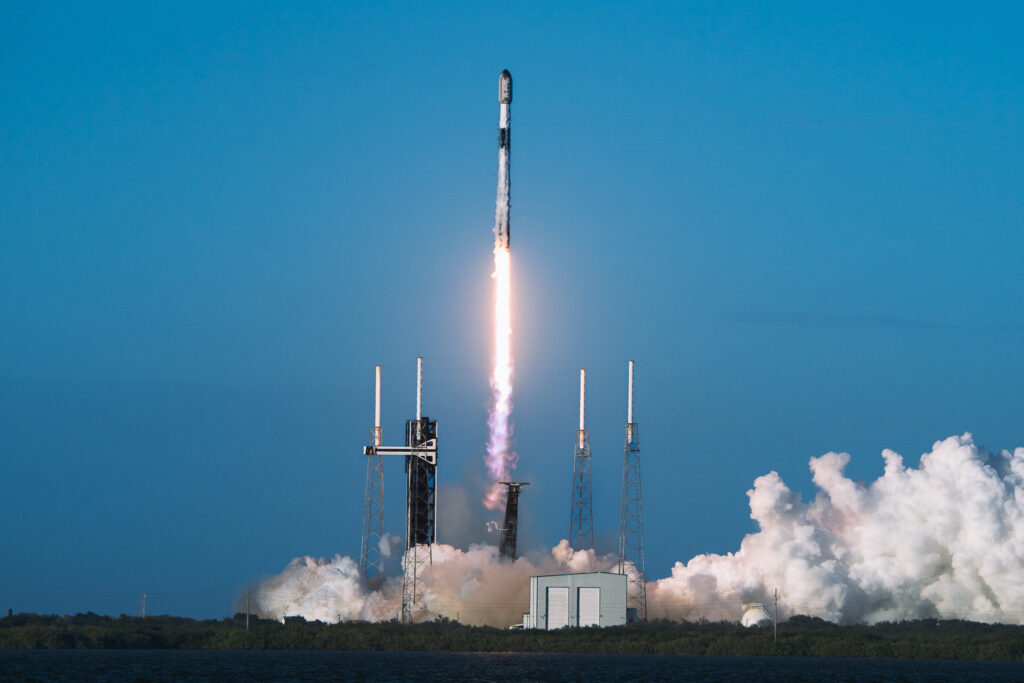SpaceX successfully launched 24 more Starlink high-speed internet satellites into orbit on Monday, marking another milestone in the company’s mission to provide global internet coverage. The Falcon 9 rocket, with tail number B1080, took off from Space Launch Complex 40 (SLC-40) in Florida at 4:23 p.m. ET.
This launch was particularly noteworthy as it was the 12th flight for the B1080 first-stage booster, which had previously completed missions such as Euclid, Axiom-2, Axiom-3, Cygnus NG-21, SES 24, and CRS-30. Additionally, this booster has now launched a total of six Starlink missions, further expanding SpaceX’s satellite constellation in low-Earth orbit.
Originally scheduled for Sunday, the Starlink 6-69 mission was rescheduled for Monday due to weather conditions. The 24 Starlink satellites launched on this mission were of the V2 Mini variety, making it only the second time SpaceX has launched 24 satellites in a single mission, as opposed to the usual 23.
Following liftoff, the B1080 tail successfully landed on the ‘A Shortfall of Gravitas’ droneship, marking the 84th landing at the pad. This launch was the 108th Falcon 9 launch of 2024, bringing SpaceX closer to its goal of completing 144 missions for the year.
Looking ahead, SpaceX has several more Starlink launches planned before the end of the week, with CEO Elon Musk hinting at the possibility of the sixth Starship test flight in the coming weeks. The earliest expected date for the Starship test flight, known as IFT-6, is currently set for next Monday, November 18, pending all necessary FAA licenses.
Overall, SpaceX continues to make significant strides in its mission to revolutionize space technology and provide global connectivity through its Starlink satellite network. With further launches and developments on the horizon, the future looks promising for the pioneering aerospace company.

